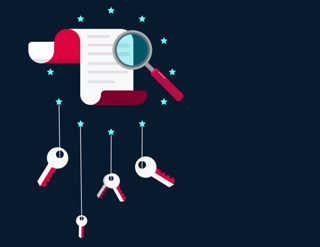Chances are you’ve already seen quite a bit of buzz surrounding the EU General Data Protection Regulation (GDPR), especially given that we’re just about one year away from the enforcement date (May 25, 2018). And for good reason — it represents a significant change in how data will be handled around the world.
For starters, if you’re not quite sure where to begin, check out our latest white paper for guidance.
If you’re still feeling overwhelmed by the various provisions and stipulations of the regulations, here’s a vote of confidence: most of them boil down to one simple thing — data governance. And by putting solid data governance practices in place, you’ll be well on your way to compliance.
 The key to big data GDPR compliance: good data governance practices.
The key to big data GDPR compliance: good data governance practices.
Back Up… Why Data Governance?
One of the most daunting things about the GDPR is that organizations already have accumulated massive amounts of data (some of it copied many times over and used in countless different information systems), and the regulations apply not just going forward, but retroactively as well.
The way many businesses today manage data (or rather … don’t manage it), a simple right to be forgotten request from an EU user — something with which you’ll have to comply under GDPR — becomes extremely complicated and operationally disruptive. In other words, your underlying system is not built in such a way that you can trace specific pieces of data, for customer requests, audits, etc., GDPR becomes exponentially more complicated. Fortunately, data governance holds a lot of the answers.
What Does Data Governance Entail Exactly?
Becoming GDPR compliant is both a matter of preparing your data and also preparing the processes for how you handle, manage and use that data. Companies must be sure that they can provide the full lineage of their data, meaning that when you create something from data, you must be able to go back in time and determine which particular data you used and how.

Under GDPR, you'll need to easily be able to trace what data is being used where (quickly).




